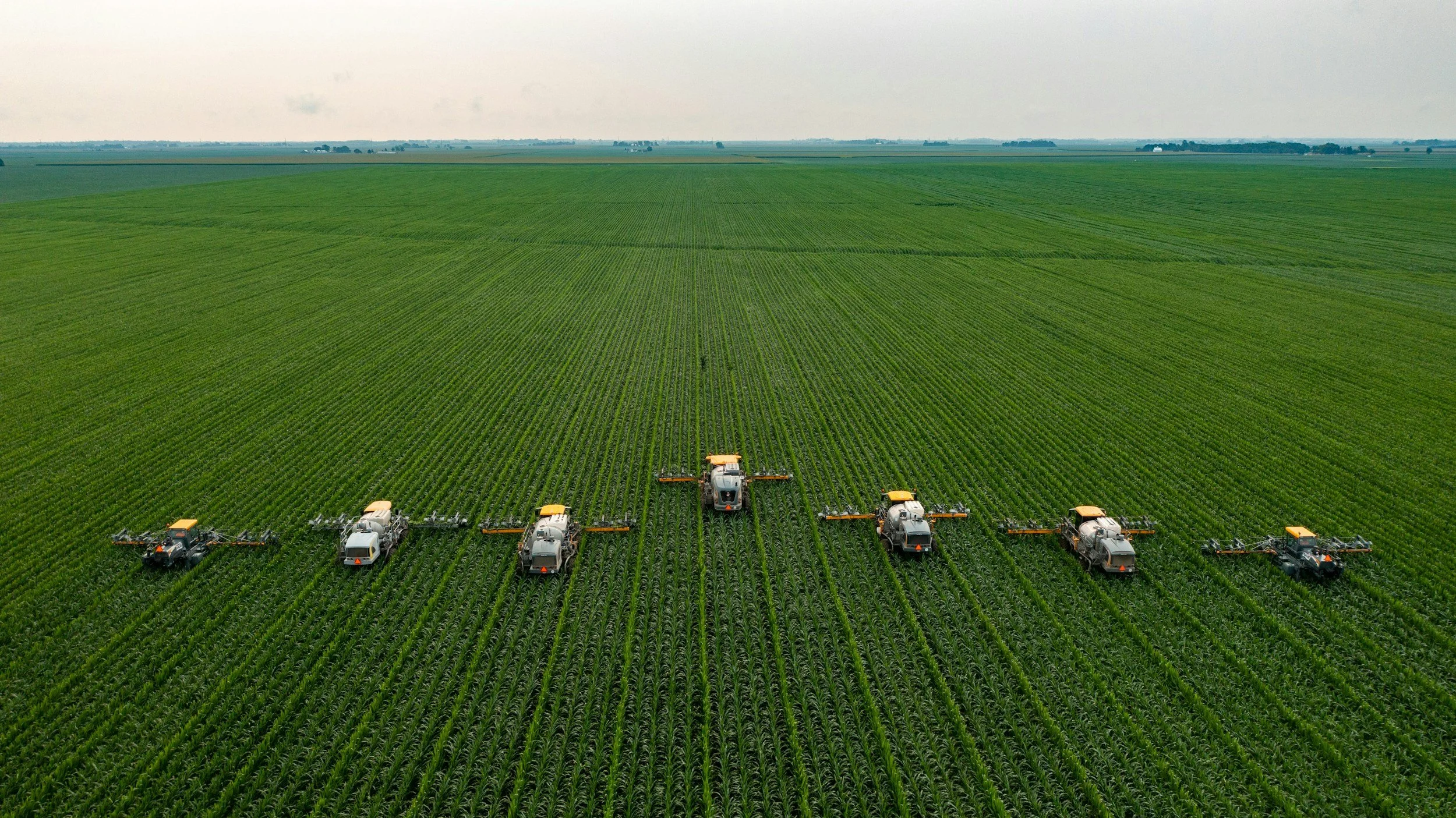7 Effective Erosion Control Techniques for Sustainable Farming
/Soil erosion is a silent thief, gradually stealing the fertility of our farmlands and threatening the sustainability of agriculture worldwide. For farmers striving to maintain productive and resilient farms, combating erosion is not just an option—it's a necessity.
Fortunately, numerous effective techniques can be employed to prevent this natural degradation. This article explores seven proven methods farmers can adopt to combat erosion and promote sustainable farming practices.
Sub-Horizontal Drainage
Sub-horizontal drainage consists of a network of perforated pipes laid beneath the ground to facilitate water movement away from the soil surface. This method is beneficial in areas prone to waterlogging or poor drainage, as it helps maintain optimal soil moisture levels for healthy crop growth.
This drainage method also minimizes surface runoff, reducing soil erosion and nutrient loss. Optimizing soil moisture levels promotes healthier crop growth and can result in higher yields. Additionally, sub-horizontal drainage is versatile, making it suitable for various soil types and agricultural settings, from flat fields to gently sloped terrains.
Installing a sub-horizontal drainage system requires precise planning and execution to ensure its effectiveness. Hiring a professional drainage contractor who can assess your specific needs, design an appropriate system, and carry out the installation with the right expertise and equipment is advisable.
Professional installation ensures that the drainage system functions efficiently and provides long-term benefits to your farm. Seeking out experts in geotechnical engineering in your area can offer specialized knowledge and services tailored to your agricultural needs.
Contour Farming
Contour farming involves ploughing and planting crops along the land's natural contours rather than straight lines. This method creates a series of ridges and furrows that follow the landscape's elevation, forming natural barriers that slow down water flow. This technique not only minimizes erosion but also reduces runoff by allowing rainfall to be stored behind the ridges.
The storage capacity of these furrows is significantly increased when using ridge tillage systems, which involve creating raised rows for planting. Row crops are planted on the same furrow yearly, maintaining storage capacity.
This approach helps retain soil moisture and nutrients, enhancing soil fertility and crop productivity. Additionally, contour farming helps prevent the formation of gullies and improves water infiltration, making it a highly effective erosion control method for hilly terrains and sloped agricultural fields.
Windbreaks
Windbreaks, consisting of rows of trees or shrubs, are strategically planted to protect soil from wind erosion. These vegetative barriers reduce wind speed, helping to prevent the loss of topsoil and shield crops from wind damage.
Windbreaks create a more favorable microclimate for crops, reducing wind stress and evaporation and improving crop yields. Additionally, they enhance the farm's aesthetic appeal and provide habitat for wildlife, contributing to increased biodiversity.
Selecting tree and shrub species suitable for the local climate and soil conditions is crucial for the effectiveness of windbreaks. Planting them perpendicular to prevailing winds maximizes their protective benefits. Proper spacing of the plants ensures adequate coverage and allows for sufficient airflow.
Grassed Waterways
Grassed waterways are natural or constructed channels planted with grass to direct water flow across farmland safely. These channels are designed to slow down water movement, allowing sediments to settle and thus preventing soil erosion.
Additionally, grassed waterways improve water quality by filtering out pollutants and trapping sediments. This method not only reduces soil erosion but also creates a beneficial habitat for wildlife, thereby enhancing biodiversity on the farm.
Establishing grassed waterways involves identifying areas where water naturally flows and where erosion is most likely. Durable grass species that can withstand water flow and provide robust ground cover are planted in these channels.
Regular maintenance, including debris removal and proper vegetation management, is essential to ensure the effectiveness and longevity of grassed waterways. This erosion control technique is a practical and environmentally friendly way to manage water flow and protect soil health on agricultural land.
Cover Crops
Cover crops are plants grown specifically to protect and enhance the soil during periods when regular crops are not cultivated. These crops provide a protective cover over the soil, reducing erosion by shielding it from wind and rain. Some cover crops can also be interplanted with regular crops during the sowing and harvesting periods.
Additionally, cover crops play a crucial role in improving soil structure, enhancing fertility, and increasing organic matter content. They help prevent soil erosion by offering continuous ground cover, stabilizing the soil and retaining moisture.
The benefits of using cover crops extend beyond erosion control. They contribute to soil health by adding organic matter and essential nutrients, which are vital for the growth of future crops.
Cover crops also help suppress weeds, as their dense growth competes with weed species, reducing their presence. Furthermore, cover crops can help reduce pest populations by disrupting pest life cycles and providing habitat for beneficial insects.
Choosing species well-suited to the farm's specific climate and soil type is essential for maximum efficiency. Planting cover crops immediately after harvesting the main crop ensures that the soil remains covered throughout the year.
Using a mix of different cover crop species can provide a broader range of benefits, as different plants contribute unique attributes to soil health and fertility. This diverse approach helps to optimize the advantages of cover cropping, making it a valuable practice for sustainable farming.
Controlled Traffic Farming
Controlled Traffic Farming (CTF) is a farming method where all machinery is restricted to specific paths or tracks in the field. This approach reduces soil compaction by keeping heavy equipment on designated lanes, allowing the rest of the soil to stay loose and healthy. With Controlled Traffic Farming (CTF), soil structure improves, water infiltration increases, and erosion decreases. Healthier soil leads to better crop yields and more efficient use of water.
To start with CTF, farmers plan the layout of traffic lanes based on their equipment size and field shape, ensuring lanes are wide enough for all machinery. Using GPS guidance systems helps keep machinery on these tracks consistently.
Initially, traffic lanes are compacted to create stable paths, and unnecessary tilling in other areas is avoided to maintain soil health. Farmers use these lanes for all field operations like planting, spraying, and harvesting, which prevents soil compaction elsewhere. Regular checks and maintenance of the lanes are necessary to fix any damage.
Earth Bunds
Earth bunds are simple, raised soil barriers constructed along a field's contour lines to manage water flow and reduce soil erosion. These barriers slow down water runoff, allowing it to infiltrate the ground and preventing the loss of fertile topsoil.
Retaining water and maintaining soil moisture helps conserve water, improve soil fertility, and support healthy crop growth. Earth bunds are constructed by raising mounds of soil using essential tools, and they require regular maintenance to ensure they remain effective.
Final Words
Implementing effective erosion control techniques is essential for the sustainability and productivity of any farm. Techniques such as contour farming, cover crops, grassed waterways, and windbreaks protect the soil, enhance water conservation, improve soil health, and boost crop yields. These methods provide practical solutions tailored to different terrain and farming practices, ensuring the land remains fertile and productive for future generations.
About the Author:
Reign Patterson is a freelance writer based in Michigan whose niche focuses on lifestyle and the environment. Her interest in these areas has allowed her to participate in various eco-friendly initiatives, which are now part of her day-to-day life. When she’s not writing, Reign spends her time tending to her garden.








































Soil health is crucial for our planet. It refers to how well the soil can support plants, manage water, filter pollutants and ultimately sustain life. To understand what makes soil healthy, we need to consider its physical, chemical and biological qualities.